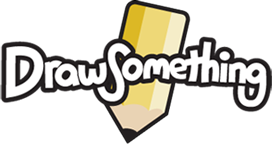Data is fast becoming the hot commodity in today’s society. What do we know about our customers? How can we use our customer’s habits and trends to make our product better? While this concept is not uncommon in the non-digital world (printed surveys and small inserts in magazines aren’t uncommon), filling in surveys is fast becoming a common and, frankly, boring method of collecting data about customers or users or a product.
I know, why not make them draw things instead?
DrawSomething, a popular mobile and online game by OMGPOP, has taken the digital world by storm. Worldwide, mobile users are connecting with their friends (many via Facebook) and drawing pictures of words such as “swimming”, “magnet” and “katyperry”, in the hopes that their friend will be able to guess the word correctly. This digital take on the popular “Pictionary” board game is great fun and, frankly, rather difficult to put down. Other than the fun factor, what is the real bigger picture (pardon the punn)?
When someone in DrawSomething draws a picture or guesses a word, each is timed and tracked. Pressing the “Stats” button next to one of your “opponents” shows your average guessing and drawing time between the two of you, as well as the colours used and number of words guessed. This is great, but still not the true data-rich point in DrawSomething, for me. What about the drawings?
How many ways are there “really” to draw a word such as “swimming”? Infinite possibilities. How many do we choose? One.
When you think of the word “swimming”, does a stickman swimming through some waves doing the “crawl” with one arm in the air not come to mind as the simplest (and therefore “best”) picture to draw, such that the opponent will guess correctly? This seems to revert to our inner ideas and associations between words and images in their simplest form.
Being able to track this data, with the pre-defined and finite number of words available in DrawSomething, would be an amazing leap forward in data tracking and disecting the human mind and how we perceive the world around us. Not only our perception, but also how we communicate that visually to others. It is said that, after the age of approximately 10 years old, one has “seen” all that one needs to in the world. For example, a tree, when glanced at from a distance, is mearly a tree. Our brain receives the message that “this is a tree” and looks no deeper unless conciously instructed to do so. This theory, coupled with data entered into DrawSomething, could make for an incredible study on the strength of the human mind and how we, as a species, can improve our mental capacity for retention and communication.
With the number of users drawing pictures in DrawSomething every day, I leave you with this… how many people do you think draw something other than the above-described image of “swimming”?


Leave a Reply